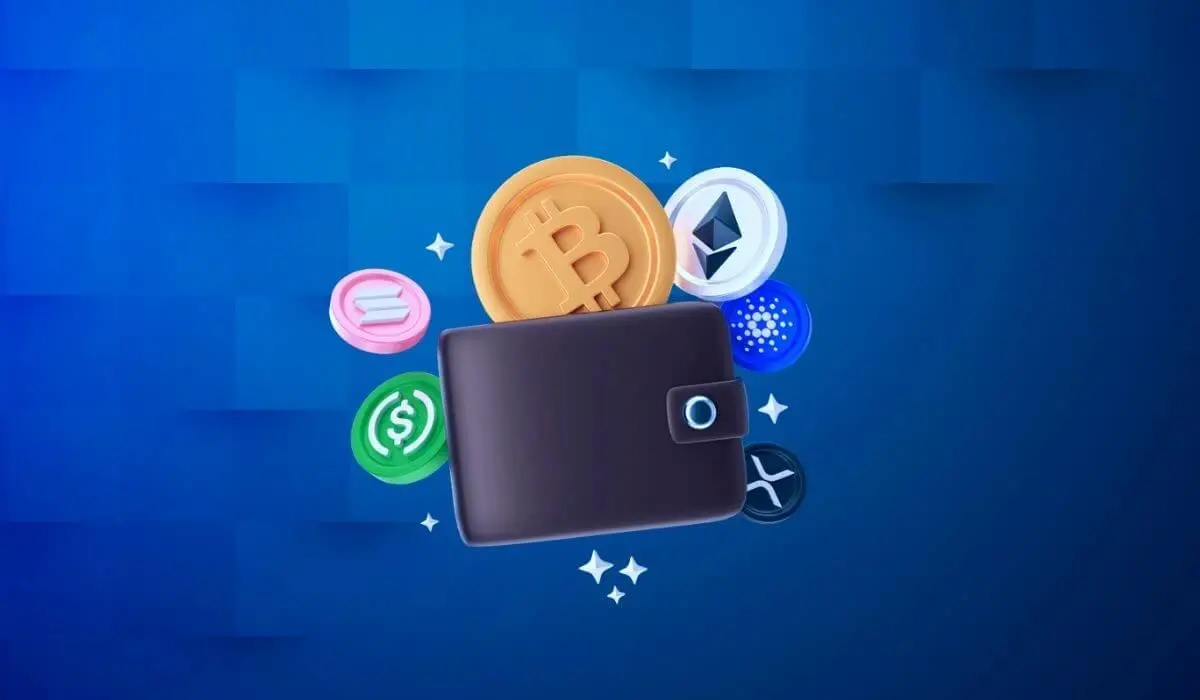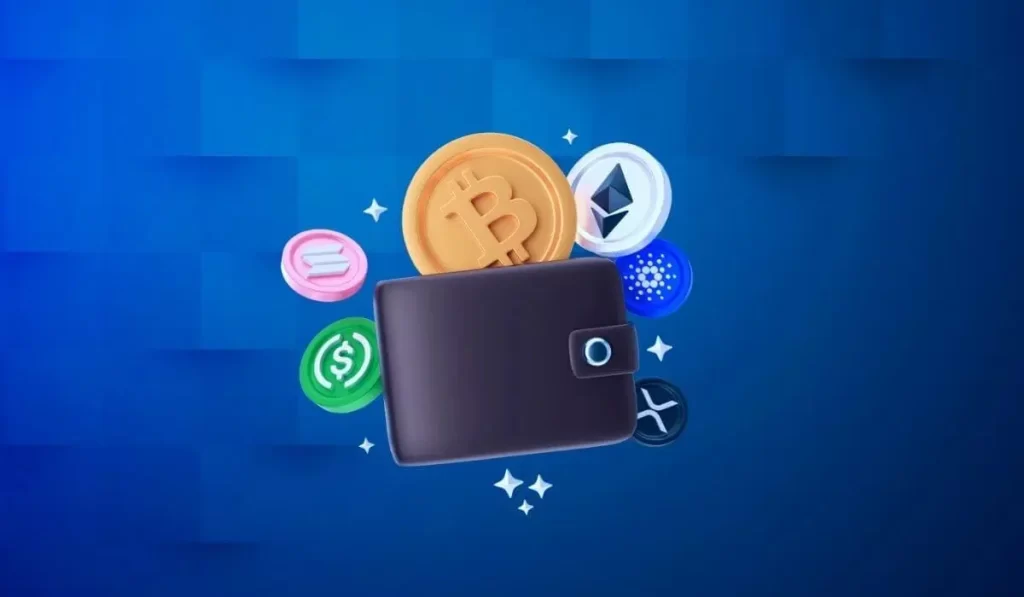
Storing cryptocurrency safely can feel a bit overwhelming, especially if you’re new to the world of digital assets. You’ve probably heard about wallets, keys, and exchanges, and perhaps you’re wondering: Where do I even start? The good news is, storing cryptocurrency doesn’t have to be complicated. It just requires a clear understanding of the tools at your disposal and a few key safety practices.
In this post, we’ll break down cryptocurrency wallets in a simple, friendly way and share tips on how to store your digital assets securely—focusing not only on what wallets are, but also on why the right approach to storage is crucial to protect your investment.

Content
What is a Cryptocurrency Wallet?
A cryptocurrency wallet doesn’t actually “hold” your coins like a physical wallet holds cash. Instead, it stores the private keys you need to access and control your cryptocurrency on the blockchain. Think of these private keys as passwords that prove you own and can spend your coins. Lose your private keys, and you lose access to your funds—forever.
Cryptocurrency wallets come in different forms, and each one offers unique benefits and trade-offs in terms of convenience, security, and control. Let’s break down the main types of wallets and explore how they differ from a fresh perspective.
The Different Types of Crypto Wallets
There are two main categories of cryptocurrency wallets: hot wallets and cold wallets. Understanding the difference between these two is the first step in choosing how to store your cryptocurrency safely.
1. Hot Wallets: Convenience Meets Risk
Hot wallets are connected to the internet, making them incredibly convenient for frequent trading or spending. They can be desktop apps, mobile apps, or web-based wallets hosted by exchanges. Because they’re online, hot wallets allow you to quickly send and receive crypto with just a few clicks.
Types of Hot Wallets:
- Mobile Wallets: Apps on your phone (like Trust Wallet or MetaMask) allow you to manage crypto on the go.
- Desktop Wallets: Software you download and install on your computer.
- Web Wallets: Wallets hosted by crypto exchanges (like Binance or Coinbase), accessed through your browser.
While hot wallets are user-friendly, their constant connection to the internet makes them more vulnerable to hacking, malware, and phishing attacks. If you use a hot wallet, it’s essential to take extra precautions, like enabling two-factor authentication (2FA) and using strong, unique passwords.
When to Use a Hot Wallet: Hot wallets are best for people who need regular access to their cryptocurrency, such as active traders or those using crypto for everyday purchases. However, only keep a small portion of your crypto in hot wallets—the equivalent of pocket cash—because of the heightened security risks.
2. Cold Wallets: Maximum Security, Less Convenience
Cold wallets, on the other hand, are offline storage solutions, making them far more secure but a bit less convenient. Because they aren’t connected to the internet, they’re immune to most online hacking attempts. Cold wallets come in two main forms: hardware wallets and paper wallets.
Types of Cold Wallets:
- Hardware Wallets: These are physical devices (like a USB stick) that store your private keys securely offline. Popular examples include Ledger and Trezor. To send or receive cryptocurrency, you need to connect the device to your computer, adding an extra layer of protection.
- Paper Wallets: As the name suggests, a paper wallet is simply a printed document containing your private and public keys. It’s an old-school method of offline storage, and while highly secure, it can be risky if the paper gets lost, stolen, or damaged.
When to Use a Cold Wallet: Cold wallets are ideal for long-term storage or large amounts of cryptocurrency that you don’t plan on trading often. If you’re a “HODLer” (someone who holds onto their crypto as a long-term investment), a cold wallet is your best bet for protecting your assets.
A Fresh Take: Think of Wallets as Layers of Security
Here’s a new way to think about wallets: instead of choosing just one wallet, consider using multiple wallets as layers of security. Much like you wouldn’t store all your cash in a single place, diversifying your storage methods can significantly reduce your risk.
For example, you might keep a small portion of your crypto in a hot wallet for quick access and regular use. Meanwhile, your long-term investments or larger holdings can be safely tucked away in a cold wallet.
By spreading out your crypto between hot and cold wallets, you reduce your exposure to potential hacks while still enjoying the convenience of spending or trading crypto when you need to.
Key Safety Tips for Storing Crypto
Now that you understand the types of wallets available, here are some essential safety tips to keep in mind:
1. Never Share Your Private Keys
This one can’t be stressed enough: your private keys are the key (pun intended) to accessing your funds. If someone gets hold of them, they can access and drain your wallet. Always keep your private keys offline and never share them with anyone.
2. Use Two-Factor Authentication (2FA)
For hot wallets, especially those hosted by exchanges, always enable two-factor authentication. This adds an extra layer of security by requiring a second form of verification (like a code from your phone) in addition to your password.
3. Backup Your Wallet
Whether you’re using a hot wallet or cold wallet, always have backups. For hardware and software wallets, you’ll often receive a recovery phrase (also called a seed phrase) when you set up the wallet. Store this phrase securely offline and away from prying eyes. If your device gets lost or damaged, the recovery phrase will allow you to restore your wallet.
4. Beware of Phishing and Scams
Be cautious of emails or websites asking for your private keys or recovery phrase. Scammers often mimic legitimate services to trick users into giving up their sensitive information. Always double-check URLs and never click on suspicious links.
5. Consider Multi-Signature Wallets
For added security, you can opt for a multi-signature wallet. These require more than one private key to authorize a transaction, reducing the risk of someone accessing your funds with a single key. This is particularly useful for businesses or joint accounts.
The Importance of Self-Custody
Another crucial point to consider is the self-custody of your crypto assets. When you leave your cryptocurrency on an exchange, technically the exchange holds your private keys—not you. This means you don’t have full control over your funds, and if the exchange is hacked or goes under, your crypto could be at risk.
The phrase “not your keys, not your coins” highlights the importance of having direct ownership of your private keys. Using a personal wallet (hot or cold) gives you full control over your assets, protecting you from the potential risks of relying on third-party exchanges.
Conclusion: Store Your Crypto with Confidence
Storing cryptocurrency safely boils down to understanding your wallets, making smart decisions about which to use, and following essential security practices. While hot wallets provide quick access and convenience, cold wallets offer long-term, airtight protection. By using a combination of both, you can enjoy the best of both worlds.
Ultimately, the more you understand how wallets work, the more confident you’ll be in managing your digital assets. Whether you’re a seasoned trader or just starting out, always prioritize the safety of your private keys—and with the right approach, you’ll keep your cryptocurrency secure for the long haul.

Jeremy is a crypto blog author who has been in the blockchain industry for 3 years. He loves to read and write about cryptocurrencies, blockchain technology, and cryptocurrency news. He is also an avid trader of various digital assets such as bitcoin and other altcoins on various exchanges including Binance, Bitfinex, Kraken, Kucoin etc.


